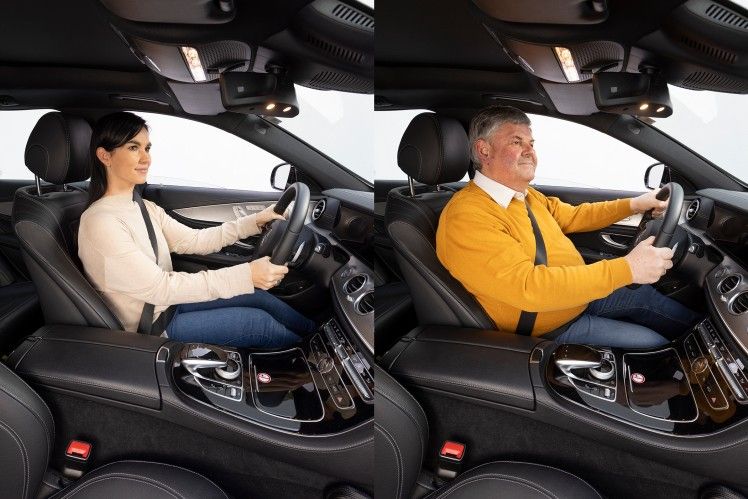ZF Unveils Smart Seat Belt Technology
2024-Jan-30
- New seat belt system from ZF Passive Safety Systems helps further reducing the consequences of accidents
- At the same time, the system makes it easier for vehicle manufacturers to implement the increased requirements for adaptivity of restraint systems in the NCAP Roadmap 2030
- The core of the technology is the so-called Multi-Stage Load Limiter (MSLL), which adapts the restraining force of the belt to the stature and size of the occupants
- The seat belt thus becomes an intelligent, flexibly controllable component in a vehicle's safety concept
With its new seat belt system, ZF Passive Safety Systems will enable significantly improved adaptation of the belt force limitation to the size and body weight of the vehicle occupants in the future. The Multi-Stage Load Limiter (MSLL) is primarily responsible for the individual system adjustment. It helps to further reduce the consequences of accidents for all occupants and enables car manufacturers to meet the increased requirements of the NCAP Roadmap 2030. The innovative approach of this technology lies not only in the individual control options of the component itself, but also in the extended possibilities for interaction with other safety systems. This turns the seat belt with the MSLL switchable force limiter into an intelligent, flexibly controllable safety device.

Modern restraint systems already intervene in accidents at a very early stage. In the event of an unavoidable crash, the belt tightens around the body before the crash (pre-tensioning) to reduce belt slack and decelerate it in a controlled manner after the impact and finally transfer it forwards into the airbag. The systems are based on representative, standardized test subjects (dummies). In future, the NCAP crash test will demand even better protection for individual vehicle occupants. "The demands on the adaptivity of safety systems are increasing - both in the expectations of end customers and in the NCAP test criteria. Our new belt system makes it easier for vehicle manufacturers to meet the increased requirements and specifically reduces the consequences of accidents by adapting even better to the occupant," says Rudolf Stark, Head of ZF's Passive Safety Technology Division.
In order to reduce the forces acting on the body in the event of an accident, many seat belt systems already have a two-stage controllable load limiter (SLL). This was an important step towards adaptivity. To provide even more flexibility, ZF now offers its belt tensioner with multiple switchable load limiter (MSLL). It has a multi-stage design and can vary the restraining forces even better over the entire course of the crash. The system makes it possible to respond individually to people of different stature and to control the belt forces appropriately.
In the future, the path to more variability in belt forces will lead via the sensory recording of the interior in order to recognize even better which people are sitting where and which belt forces are to be applied individually in the event of a serious or minor collision. Various sources will be used for this: In addition to interior cameras, which, for example, detect when the driver operates the infotainment with their right hand or turns their head towards the rear occupants, the seat belt system itself can provide valuable information. This is because the sensors in the belt can measure the belt pullout length and thus allow conclusions to be drawn about body circumference and therefore stature and weight. In addition, there is the link to the active safety systems and their sensors outside the vehicle - from the camera to the radar. For the networked restraint system, for example, it is important to know from which direction an impact is coming. In this way, the MSLL can offer small and light persons better adapted individual protection in the event of moderate accidents (with impact speeds of up to 35 km/h). This applies, for example, to children in the rear seat. Older people, who have a higher risk of injury due to age dependent changed bone structure, can also benefit from this. In addition, the system also potentially improves occupant safety for heavy people in overload accidents (with impact speeds above 56 km/h).



